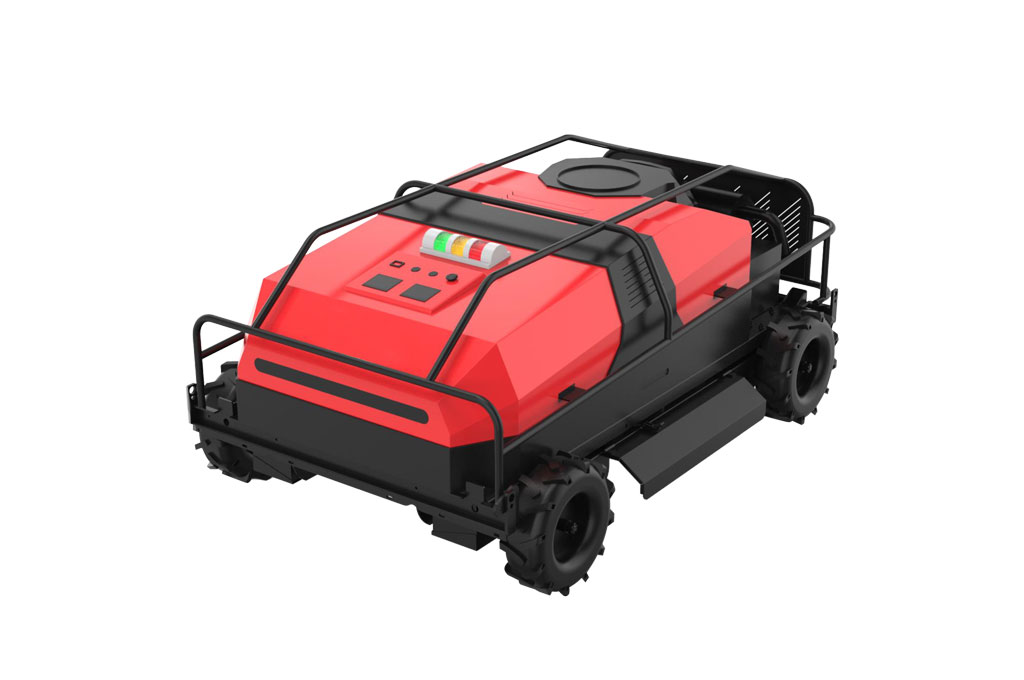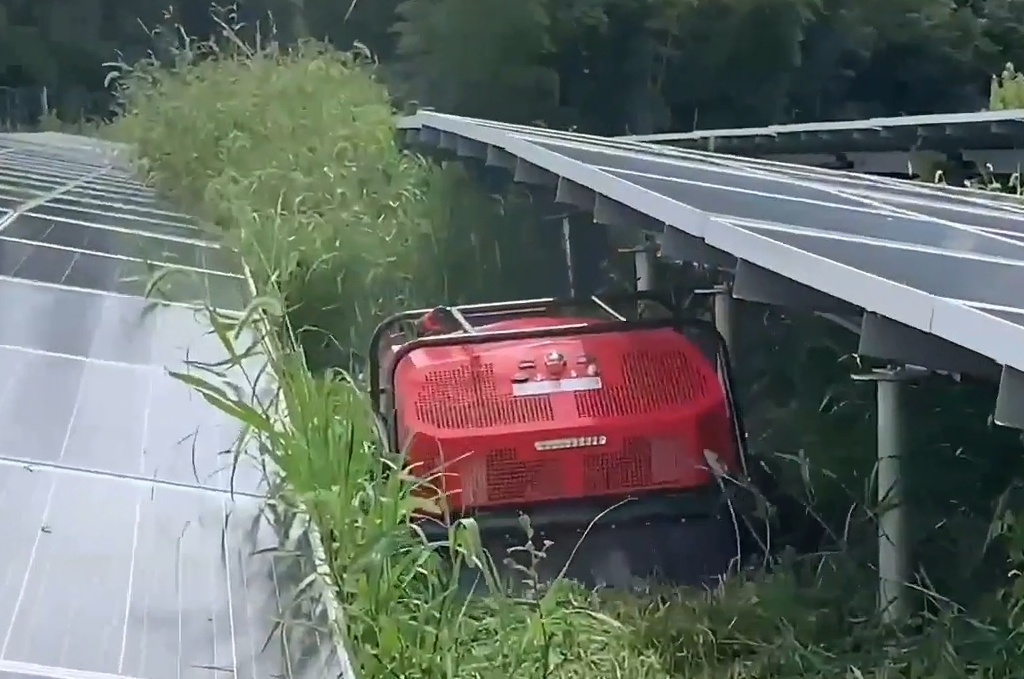Why Vegetation Management Matters in Solar PV Stations
1. Reduced Power Output Due to Shading
Overgrown weeds and vegetation can block sunlight from reaching solar panels. Since power output is directly proportional to solar radiation, shading leads to a measurable drop in efficiency. Unmanaged weed growth around large-scale solar arrays can result in significant energy loss over time.
2. Impaired Heat Dissipation
Thick vegetation near solar panels hampers natural airflow, reducing their ability to dissipate heat. In high temperatures, panels can overheat, increasing internal resistance, lowering power output, and potentially shortening equipment lifespan.
3. Increased Maintenance Costs
Manual weed removal requires frequent labor, specialized tools, and careful operation to avoid damage to sensitive components like cables and junction boxes. Irregular weed growth often necessitates repeated attention, making operations time-consuming and costly.
Limitations of Traditional Weeding Methods in PV Sites
- Low efficiency: Manual tools and walk-behind mowers cannot handle large areas effectively.
- Poor terrain adaptability: Conventional machines struggle with slopes, uneven surfaces, and narrow aisles between panels.
- High risk of damage: Improper operation may result in panel scratches or damage to cabling.
- High maintenance and fuel costs: Traditional machines require regular servicing, fuel, and labor, increasing total cost of ownership.
Advantages of Remote-Controlled Lawn Mowers for Solar Applications
1. Terrain Adaptability
Equipped with robust rubber tracks, remote control mowers can traverse slopes, rocky terrain, and narrow spaces with ease. Their strong grip and autonomous path correction technology ensure stability and consistent coverage on complex photovoltaic sites.
2. High Efficiency and Labor Savings
A single remote-controlled mower can replace up to 30 workers in terms of daily output. This dramatically improves productivity, enabling large PV stations to maintain clean panel surroundings and optimize solar exposure.
3. Enhanced Safety
Operators can control the mower from a safe distance (up to 200 meters), reducing risk in challenging environments. Protective baffles prevent debris from flying during operation, ensuring a safe and controlled mowing process.
Structural and Functional Highlights
Main Frame
Built from high-strength steel, the mower’s chassis ensures long-lasting durability in harsh environments. The ergonomic layout supports remote access and simplified maintenance.
Drive System
- Electric drive: Brushless DC motors provide powerful torque with high energy efficiency and low noise.
- Hybrid options: Some models use gasoline-electric systems (e.g., Loncin engines), combining endurance with energy flexibility.
Track System
Heightened track teeth grip steep slopes securely. The crawler platform integrates an auto-correction system to maintain precise routing, even on rough terrain.
Weeding Module
Features include adjustable cutting height, horizontal and vertical cutting modes, and a built-in mulching function. Grass residues decompose naturally, enriching the soil and aligning with sustainable agriculture principles.
Battery and Control System
Battery modules come with safety keys, voltage regulators, and remote monitoring to prevent misuse and ensure stable performance across different working conditions.
Game-Changer for Photovoltaic Operations
Remote control mowers represent a technological leap in solar farm operations. They reduce labor dependence, cut maintenance costs, and boost energy output by ensuring optimal panel conditions. With continued innovation, such intelligent equipment is set to become standard in the global renewable energy O&M ecosystem.
Conclusion
For solar farm owners and operators seeking to enhance efficiency and meet carbon reduction targets, remote control lawn mowers offer a sustainable, cost-effective solution. Whether it’s tackling uneven terrain, reducing downtime, or improving safety—these machines are redefining vegetation management for photovoltaic power plants.


